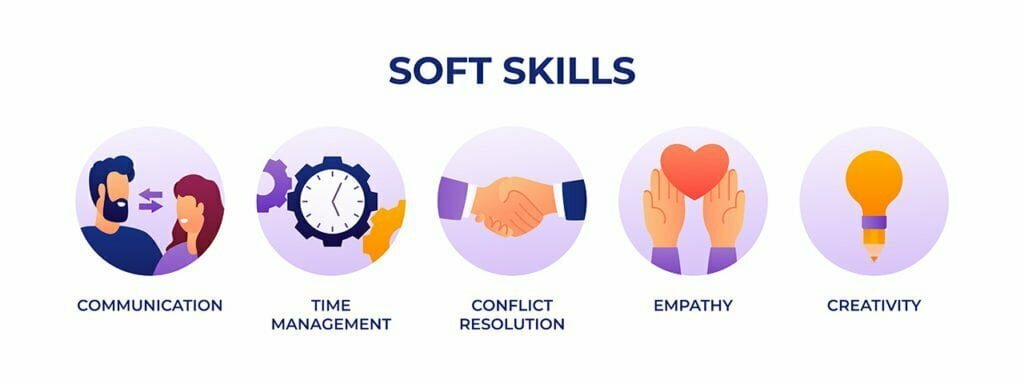Реальность vs Ожидания: Трудности поиска первой работы для джунов

Добро пожаловать в мир IT! Место, где мы плаваем в океане бинарного кода, а кофе становится нашим основным источником питания. Но не все так радужно, как может показаться на первый взгляд. В этой статье мы разберемся с проблематикой поиска первой работы для Junior IT-специалистов. Здесь будет все: мифы и реальность, борьба за место под солнцем и, конечно, советы по выживанию.
Ожидания от поиска работы в IT-сфере
«Если вы знаете, как включить компьютер, вы уже можете работать в IT!» Что ж, друзья, это один из тех мифов, которые, к сожалению, не отражают реальность. Да, IT — одна из наиболее привлекательных областей, но и требования здесь довольно высоки.
И даже после успешного трудоустройства случаются разочарования. Если вы думаете, что работа в IT — это всегда как в фильмах: хакеры, пончики и вечеринки каждую пятницу, то, боюсь, вам предстоит немало разочарований. Хотя вечеринки, наверное, бывают, но, увы, не каждую пятницу.
Реальность поиска работы для Junior IT-специалистов
Согласно данным LinkedIn, количество вакансий для Junior-специалистов растет медленнее, чем для Middle и Senior. Кажется, у каждого новичка будет не один персональный соперник на пути к вакансии, а десятки или даже сотни.
Миф: «Вам нужно знать лишь один язык программирования, чтобы начать работать».
Реальность, согласно исследованию Glassdoor: знание нескольких языков программирования, опыт работы над реальными проектами и, о да, знание английского языка.
Согласно отчету StackOverflow, количество Junior IT-специалистов на рынке просто зашкаливает. Это как битва в режиме «каждый сам за себя», где каждый пытается заполучить свое место под солнцем. А вакансий для них? Ну, скажем так, они как редкий артефакт в мире фэнтезийных игр. Все охотятся за ними, а шанс найти их исчезающе мал.
Количество откликов и советы для успешного трудоустройства
Считайте, что поиск первой работы в IT — это как встреча с боссом в финальном бою видеоигры. Вам придется сделать множество ходов, чтобы пройти к следующему уровню и получить заслуженную награду. Давайте разберемся, сколько откликов придется отправить, чтобы наконец пройти этот уровень, и дадим вам пару советов, как это сделать успешно.
Статистика по количеству откликов
Итак, согласно статистике, чтобы получить приглашение на собеседование, вам может потребоваться отправить где-то от 50 до 500 откликов на вакансии. Затем, чтобы получить заветный оффер, придется пройти от 5 до 20 собеседований. Числа могут немного варьироваться, но главное — быть готовым к некоторому количеству битв на этом пути.
Советы, вытекающие из статистики
- Не сдавайтесь на поле боя: Если получили пару (десятков, сотен) отказов, не унывайте! Продолжайте отправлять свое резюме и отклики на вакансии. Будьте настойчивыми, как злобный босс, которого вы пытаетесь победить.
- Анализируйте поле боя: Тщательно изучайте вакансии, на которые откликаешься. Не стреляйте наугад, как в песочнице. Узнайте, какие навыки и опыт требуются, и убедитесь, что вы можете соответствовать этим требованиям.
- Персонализируй свое оружие: Не шлепайте одну и ту же абстрактную бумажку всем работодателям. Адаптируйте свое резюме и сопроводительное письмо к каждой конкретной вакансии. Подчеркните свои лучшие навыки и достижения, чтобы сразить врага в самую точку.
- Стройте свой собственный клан: Создайте свой профиль на профессиональных платформах (LinkedIn, GitHub, GeekLink). Покажите свои крутые проекты и достижения, заведите знакомства с другими игроками в этой индустрии.
- Используйте магический сетевой эффект: Участвуйте в различных событиях, встречах и конференциях, где можно встретить боссов и других игроков. Ведь иногда удача может быть на вашей стороне, когда вы находитесь в нужном месте в нужное время.
И еще 5 советов
- Готовьтесь персонализировано к каждому собеседованию и научитесь отвечать на вопросы типа «Расскажите о себе» без запинки.
- Создайте портфолио проектов, которые демонстрируют вашу способность решать реальные задачи. Это будет вашей защитой в битве за работу.
- Изучайте новые языки программирования, технологии и инструменты, чтобы стать более ценным кандидатом.
- Помните, что реальность не всегда соответствует ожиданиям: Будьте готовы к трудностям и разочарованиям. Это часть пути к успеху.
- Найдите свою собственную историю успеха: Не сравнивайте себя с другими. Каждый проходит свой уникальный путь. Найдите свои сильные стороны и используйте их в свою пользу.
Заключение
Дорогие друзья, путь к поиску первой работы в IT может быть нелегким и полным сюрпризов. Реальность может отличаться от наших ожиданий, и это вполне нормально. Важно оставаться гибкими, настойчивыми и открытыми для обучения. Не забывайте, что в каждом вызове есть возможность для роста и развития.
Так что вперед, бросайте вызовы IT-рынку, искателям вакансий и требованиям работодателей! Следуйте нашим советам, улыбайтесь насмешкам реальности и никогда не прекращайте развиваться. В конце концов, ваш труд и настойчивость приведут вас к вашей мечте о успешной карьере в IT!






 , а затем
, а затем
Невольно появляется ощущение, что сейчас проще самому собрать безработных джунов, которые за опыт будут делать тебе проект 🙃